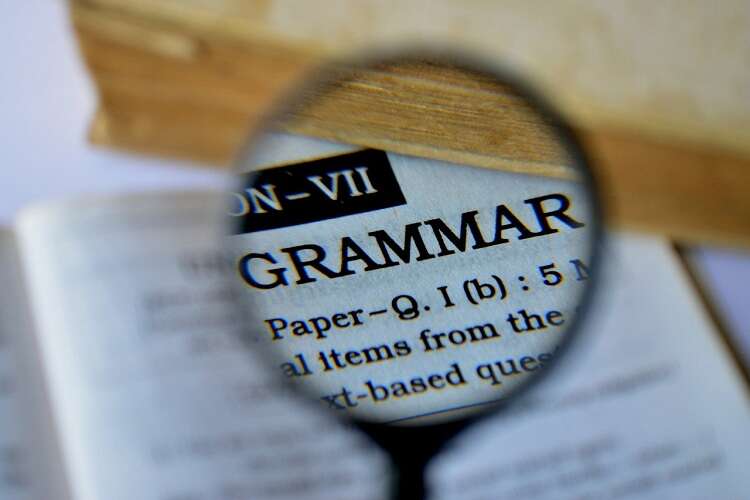Grammar for IELTS plays a quintessential part; without it, you can barely work your English out. Of course, we understand that English Grammar is a fairly detailed subject and takes years to master it, but we have followed the IELTS marking trends and came up with some popular rules of English grammar that will help you to score better.
Why Grammar for IELTS is Important?
One of the most important marking criteria in IELTS is the grammatical range. It is described as the ability of the students to use a range of grammatical structures that are appropriate to the context.
Here are the band descriptors for grammatical range and accuracy in IELTS writing task 2:
7 Basic Grammar Rules You Must Know
Now coming to the main point of this article; we are here with some basic grammar rules that are rather popular with the IELTS examiners. Plenty of students get confused as to what kind of grammatical structures to use. We hope this will make things clear.
English Grammar Tenses Rules
1. The Simple Present and Present Continuous Tense
We use the simple tense to talk about general, permanent or repeated actions. Here, the present simple is used to refer to a general, habitual action:
- I often read business magazines online.
Here it is implied that you read these magazines online all the time. This is something you do regularly.
We use continuous tense to focus on progressive actions that usually happen around the moment of speaking.
- I am reading an interesting book.
Here, the present continuous is used to refer to an action that is happening at the moment of speaking:
The same rule applies to all the verb tenses, past, present and future. If you want to focus on the continuity of the action, use the continuous aspect. If you are more interested in the result of the action, then use the simple aspect.
2. The Simple Past and Present Perfect Verb Tenses
When using the past tense, we see these past actions as having no connection with the present. They belong to the past, so we use the past tense to express them.
Example
I ate my breakfast with Tony and then we saw a movie.
The action above happened in the past. There is no connection with the present, so we use the simple past.
If, however, the action happened in the past but it has some kind of impact on the present, or if it continues into the present, we need to use the present perfect.
Example
I haven’t eaten breakfast yet, I’m starving.
The above is perfect because it is a past action but it has an obvious impact on the present, the speaker is now hungry.
Example
I have been waiting here since 10 a.m.
The above is perfect because the action started in the past but is continuing into the present when the speaker is still waiting.
ALSO READ 5 Previous IELTS Writing Task 2 Exam Questions and Answers To Target Band 9
Active and Passive Voice Rules
3. The Passive Voice
The passive voice can be used whenever you want to sound more formal and impersonal.
You form the passive voice by using the verb “to be” in the tense you want, plus the past participle (the third form of the verb; for example, for the verb “write” you would use “written”).
Examples:
Almost 50% more courses were chosen in the second semester as compared to the first one. (the passive voice is used here, with the past tense of the verb “to be” and the past participle of the verb “choose”).
More research needs to be done before choosing a certain supplier. (“do” is used in the passive voice in the infinitive, with the verb “be” used in the infinitive and the past participle of the verb “do”).
4. Modal Verbs
You can use modal verbs when you want to express different nuances like degrees of certainty.
- Could, might and may are modal verbs and can be used to refer to possible but uncertain actions in the future, with might being slightly less certain than may.
Examples:
They could have left hours ago.
It’s almost midnight in Spain, the plane might have landed by now.
I may have mentioned your name to my colleague.
- Can is used to make general possible statements about the present, while could is used as the past of can with this meaning.
Examples:
My boss can be very demanding at times.
Students can be difficult to motivate in evening classes.
My boss could be very demanding when I first got hired.
Students could be difficult to motivate when I was an inexperienced teacher.
- Can’t (cannot) is used to express impossibility.
Example:
These conclusions can’t be right.
- Must is used when we are sure something is true and must have is used with the same meaning for the past.
Examples:
There must be a better explanation for why they haven’t arrived yet.
They must have changed their marketing strategy to afford such good prices.
5. The Definite Article
The definite article (the), as the name suggests, is used for talking about people or things that are known to the speaker, already mentioned earlier, described in some detail or unique.
Examples:
Can you turn the TV on? (The speaker knows which TV they are talking about.)
We are not going by car. The car is not big enough for all of us. (The car has already been mentioned, so we know what car the speaker is referring to.)
The gift they brought was a bit inappropriate. (We know what gift the speaker is talking about.)
I can’t open the door, as I don’t have the key. (The key is unique.)
- ‘The’ can also be used with superlatives, ordinal numbers, countries that have plurals in them or that include the words “republic” or “kingdom.”
Examples:
This is the best movie I’ve seen in a while. (superlative)
This is the second time I’ve met him today. (ordinal number)
The Czech Republic is one of my favourite countries in Europe. (a country that includes the word “republic”).
Also Read : Common Example of Uncountable Nouns: Enhance Your English Grammar
6. Comparing Adjectives
You should use adjectives as often as you can to describe people or things because they prove you have a wide range of vocabulary in speaking and writing. You may need to compare them using comparatives or superlatives, depending on what you are trying to say. There are a few rules you need to keep in mind:
Most one-syllable adjectives take -er and -est at the end to form the comparative and the superlative.
Example:
My plan is safer than yours.
This is the safest plan of them all.
Two-syllable adjectives can form the comparative and superlative either by adding -er and -est or by using more and the most. In most cases, both forms can be used.
Examples:
This is a simpler version of what I’ve just said.
I’ve never lifted a heavier bag.
This is the narrowest path I’ve ever walked on.
His was the most complete answer I got.
Adjectives that are made with three or more syllables use more and more to form the comparative and the superlative.
Examples:
I’ve never heard a more beautiful song.
This is the most interesting story I’ve ever read.
Pay special attention to irregular adjectives that don’t follow the rules above:
- good ⇒ better ⇒ the best
- bad ⇒ worse ⇒ the worst
- far ⇒ farther ⇒ the farthest
- little ⇒ less ⇒ least
In the grammar for IELTS exam you may want to use adjectives to prove your wide range of vocabulary, but pay attention to spelling while taking the writing test.
Adjectives ending in consonant + y: The y changes to I when adding -er or -est.
Examples:
Shiny ⇒ shinier ⇒ shiniest
Icy ⇒ icier ⇒ iciest
Adjectives ending in e: The ‘e’ is dropped when adding -er or -est.
Examples:
Polite ⇒ politer ⇒ politest
Gentle ⇒ gentler ⇒ gentlest
Adjectives ending in a consonant with a single vowel preceding it, double the consonant when adding -er or -est.
Examples:
Big ⇒ bigger ⇒ biggest
Red ⇒ redder ⇒ reddest
Sad ⇒ sadder ⇒ saddest
7. Watch Out for Frequent Spelling Mistakes
Here’s a list of frequent spelling mistakes students make in grammar for IELTS. Make sure you understand the rule behind each mistake so that in the IELTS Writing exam you don’t make these mistakes!
Double“l” in adverbs. Normally, you can add –ly to many adjectives and turn them into adverbs. For example, interesting becomes the adverb interestingly. However, if the adjective ends in l already, then its adverb will have a double l:
Examples:
Beautiful ⇒ beautifully
Adding -ing and -ed to verbs. If the verb ends in an -’e’, then the -’e’ is dropped before you add -ing or -ed:
Examples:
Live ⇒ living ⇒ lived
Fake ⇒ faking ⇒ faked
If the verb ends in a consonant + vowel + consonant pattern of letters, then we double the final consonant when adding -ing or -ed:
Examples:
Plan ⇒ planning ⇒ planned
Stop ⇒ stopping ⇒ stopped
If the verb ends in -ie, we change it to –ying when adding -ing:
Examples:
Lie ⇒ lying
Die ⇒ dying
Conclusion
To score well in IELTS it is necessary that your English grammar is absolutely spotless and you can show your ability to use appropriate grammar to express yourself in your writing. Using a range of grammatical structures shouldn’t be difficult if you know exactly what to use when.
Also Read : IELTS Academic/ General Writing Task 1: Complete Guide for Vocabulary and Grammar









Thank you for the golden rules that are important for cracking the examination, as you suggested the strategies and rules can you please suggest some books too?